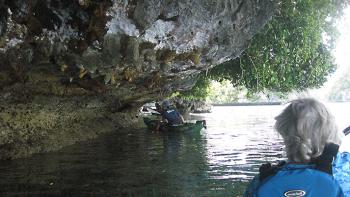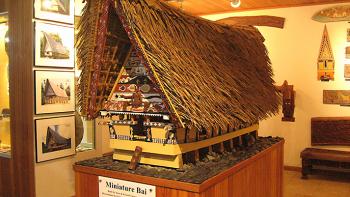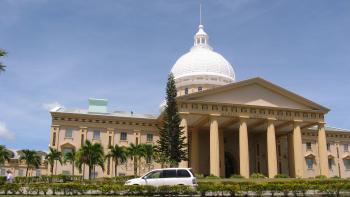A surprising stopover in Palau
This item appears on page 21 of the May 2021 issue.
Flying from Manila, Philippines, while on an around-the-world trip, my wife, Barbara, and I arrived at the airport in Babeldaob, Palau, at about 3 a.m. in late February 2019.
We went straight to the adjacent island of Koror and to bed at the wonderful Palau Central Hotel (1724 Main St.; phone +680 488 4500, palaucentral.com), right in the laid-back downtown. We saw nothing of Palau or Koror until we woke later that day, when we were greeted by bright sunshine and green forest as far as we could see.
Palau is an archipelago — not an island — located southeast of the Philippines. Koror, once the capital, is the country’s largest town.
This part of Polynesia, an area of small islands, is called Micronesia. Palau is in the western part of the Caroline Islands, which it shares with the Federated States of Micronesia. Palau figured largely in the Pacific Campaign of WWII, particularly the battle of the island of Peleliu.
United Airlines does not serve Palau every day, which is why our standard 3-day tour of each place during our trip became five days on Palau.
All our tours in Palau were arranged through our hotel. On our first day, we took a 4½-hour island tour of Babeldaob, which is very hilly and forested. Evidence of the WWII Japanese occupation can be seen at several locations on the island and include a former pineapple cannery, a destroyed radio tower, lighthouse ruins, some abandoned vehicles rusting into the dirt and a couple of pillboxes not yet devoured by the jungle.
The next day was snorkeling — a first for me but not for Barbara. Palau is a magnet for snorkelers and divers. We snorkeled at three locations and had a beach lunch at a third before taking a scenic boat tour back to the dock. Much of the coral was bleached white or tan, apparently due to a recent El Niño weather event, but it was fantastically shaped, and the fish were fantastically colored.
Weary snorkelers we were, so back to the hotel to shower and relax until supper. We found out that a folk festival, held every other Friday night, was occurring, so we walked a few blocks and attended. We had just eaten, but there was lots of food, and music.
The next morning we had a private kayak tour led by a young man, all three of us in single kayaks. It was a wonderful experience.
Palau’s many small islands appear like green biscuits jutting from the ocean. The dense jungle foliage comes right down to just a few feet from the water. These islands are limestone, and eons of saltwater has eroded their sides in and up a few feet above the water, so that kayakers are able to float under the protruding ledges around each island.
In the next three days, we had time to walk around Koror, visit a very interesting museum and a wonderful aquarium, buy some souvenirs and learn as much as we could about the local culture.
Barbara had been concerned that five days in Palau would be too much. Now she says that it was not enough!
Questions are welcome; email macc3h8@outlook.com.
GENE McPHERSON
Sturgis, SD



